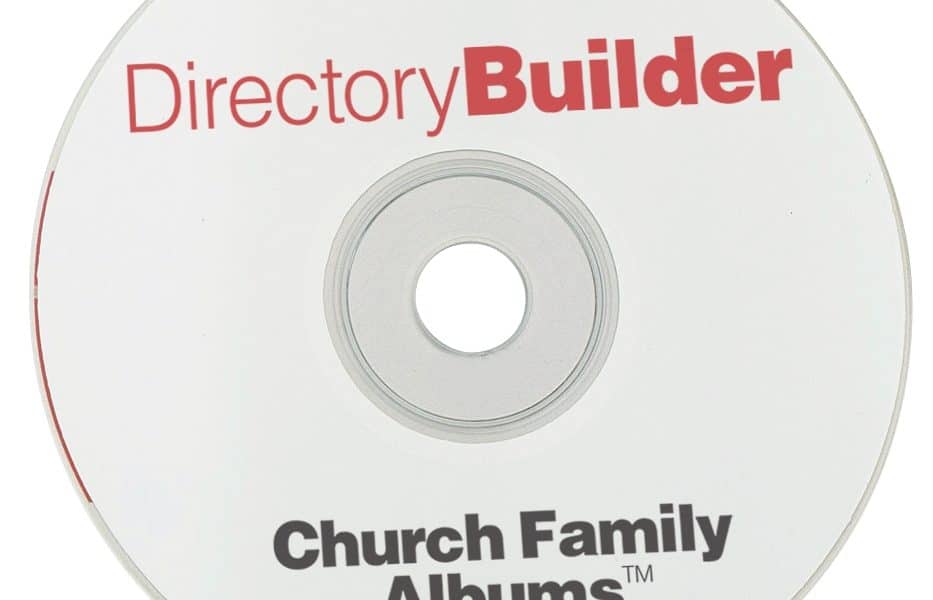This article originally appeared in the April 2005 issue.
By Frances Putman
Most growing churches know they need a membership directory to help everyone in the congregation put names and faces together. Directories also help chronicle a church’s history and record the ministries and activities taking place within its walls and through its outreach in the community.
But, according to industry experts, a directory has many purposes beyond the obvious.
“Churches are embracing the pictorial directory as a communications, reactivation and outreach tool,” said Lynda Holland, product manager with Lifetouch Church Directories and Portraits. “The directory is part of the marketing mix for the church. Not only does it serve to record historical information and capture this moment in time, the directory can be used to reach out to the community, to reactivate inactive members and to grow the church.”
An effective directory can become a professional marketing piece to prospective members, Holland said. By telling the story of the church and outlining its values, mission and vision, prospective members can see what the church has to offer.
“Through the pages of the directory, the visitor can see themselves as a member of the church,” she added.
According to Wilf Brobbel, divisional vice president of Church Family Albums, a division of PCA International, many churches decide to print more directories than are immediately needed, for both prospective members and new church members.
“In growing churches, overprint (extra directories) can be used to help new members assimilate,” he said. “They also are a handy tool for church leaders.”
That is especially true for new staff members or those whose work is concentrated in one area—music or the children’s department, for example. The directory can help these leaders get to know others in the congregation.
Compiling a directory offers churches a unique opportunity to get back in touch with church members who have become inactive. In fact, Lifetouch offers churches a reactivation program to use in conjunction with putting together the church directory. Written by a pastor and his wife, the program teaches volunteers how to listen with empathy and concern to what those who have become inactive have to say.
“The goal is to uncover the reason why the church member fell away from the church and help the pastoral staff bring the member back into the family of faith,” Holland said.
In a very real sense, directories also are important in helping members of a congregation feel connected to the church.
“A directory can solidify members to the church. Members feel a sense of pride, a sense of belonging, a sense of community when they are a part of the directory,” Holland said. “Members celebrate and commemorate their place in their church home in a pictorial directory.”
Changes in Technology
Technological advances over the past few years have radically changed the face of traditional church directories.
“As churches make more widespread use of computers, the directory service must be compatible with these needs,” Brobbel said.
With the right software, churches can design and prepare the directory on their own computers. Church members, who really understand the heart of the church, can use creative graphic skills to design a unique, one-of-a-kind directory that particularly fits a certain church.
“This results in an artistic presentation that truly reflects the church’s vision and mission,” Holland added.
Another trend industry experts are seeing more of is online directories, which can be immediately updated with address changes and the like. As a protective security measure, these directories are password-protected, so only church members might be able to access the information.
With online directories, churches can immediately and inexpensively contact church members with prayer requests or event announcements.
“Churches are embracing technology,” Holland said. “Linked to the church’s Web site or stand-alone, the online directory is fully customizable and password-protected for security. Offering such features as targeted searching, broadcast or targeted e-mails or faxes, desktop printing, bulletin boards, event calendars, online surveys and forms builder, the online directory uses technology to connect the church and its members.”
Online directories offer churches another method to spread their message, making them a perfect extension of the print directory.
Time to Compile a New Directory
Experts say most churches should plan to produce a new directory at least every three to five years.
“For churches with rapid growth, an annual new member supplement helps keep the directory current,” Brobbel noted.
Each church needs to evaluate its individual circumstances. If membership has increased significantly, a full, new directory might be warranted in fewer than three years. This also might be necessary if there is a pastoral change.
“Not only does an updated directory help the new pastor become acquainted with the membership, but it also gives the new pastor a vehicle to document his message and his commitment to creating a strong religious family,” Holland said.
If it has been awhile since your church published a membership directory, you might be surprised how things have changed. New technology is even making it simpler and easier to schedule photography appointments. Members can schedule portrait sessions from their own computer, by accessing the church’s Web site. Through Lifetouch’s system, members receive an immediate confirmation e-mail, as well as a reminder e-mail a few days before the scheduled session.
“Churches using this tool find more members schedule portrait sessions, making the directory more complete,” Holland said. “And, they also find they need fewer volunteers.”
That’s especially important in today’s growing churches.
“With large churches and peoples’ busy lives, it becomes more difficult to get committees to handle this project,” Brobbel said. “Therefore, more churches are turning to companies that offer a more complete turnkey service to handle most of the busy work.”
Getting Church Members Onboard
According to Brobbel, a directory project will be most successful if church leadership shows active support.
“It should be scheduled as a fun event and something that serves a real need for the church,” he said.
Bulletin inserts, posters, pulpit announcements and letters to individual families are all ways churches might increase excitement about the new directory.
“The message of these tools reinforces the benefits of being included in the directory,” Holland said. “Each member needs to feel that they are an integral part of the process and that their participation is necessary to make the directory complete. And, using a variety of tools at carefully placed integrals ensures the best participation possible.”
What to Include in the Directory
Typically, directories include a message from the pastor, a family portrait section, a membership roster and an activity section, documenting the church’s ministries and history.
“Many churches are now adding advertising sections to highlight member businesses, and they are selling this space as a fundraiser,” Brobbel said.
As a security measure, he added some churches are choosing to include the family portrait section, but leave out the complete roster with names and addresses.
“Churches with the best directories, the most effective directories, take great care in developing and designing their activity section,” Holland said. “This section is their opportunity to tell their unique story.”
Perhaps, she said, a church may use a symbol, like water or helping hands, which could be a theme throughout the directory.
“When carried throughout the activity section, the theme will unify the directory and effectively portray the message,” said Holland.
All in all, growing churches are beginning to see the directories not only as a way to keep members in touch, but as an important promotional piece within the church and within the community.















